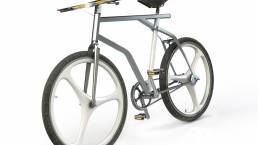Heart electrocardiogram while on the go “Cardihorse”
“Cardihorse” – motion artifact resistant, electrical biopotential signal recorder for heart diagnostics and activity monitoring for horses. Equestrian sports and riding are widespread in all the European countries and the world. Every horse needs constant movement and training at least 6 days a week for 1-2 hours. It is very important to give the horse the right load during training. Horses’ bodies are very sensitive to overloads. If the load is given incorrectly, it is extremely easy to overexert the horse and thus deteriorate its health and potential indicators – running speed, endurance, jumping. The horse’s reaction to the load is shown by its heart activity parameters. In order to adjust the individual load for each horse, there is a need to record their heart activity parameters. To solve this problem, Kaunas University of Technology researchers are developing and improving a new type of cardiograph technology resistant to motion artifacts. A convenient and aesthetic device design has been created for the mentioned technology. The developed device is small in size and weight, portable, and has an integrated battery. This device allows to maximise the intensity of training while protecting against excessive fatigue. The most important feature of the device is resistance to motion artifacts. There are no direct competitors for the technological solution of this device on the market yet. The set consists of an 18 cm wide and 2 m long elastic material belt, which is worn on the horse’s chest. The belt is fixed around the chest at the front legs. During research and testing, it turned out that this location is the most suitable for measuring horse heart data. Silver wire electrodes are sewn onto the belt in special places. A sensor is placed in the intended place in the belt, which is activated and the process of saddling the horse continues. The location of the sensor is planned over the center of the horse’s chest. This position does not interfere with the rider and the horse. This position also serves to center the belt and position the electrodes. The plastic device is riveted to the leather part and sewn to the belt. This combination does not rub the horse’s sensitive skin. During training, information about the horse’s heart activity is collected and sent to the computer.
ClientCardihorse, KTUServicesConcept designYear2021TeamDeividas Juozulynas, Denis Orlenok


















